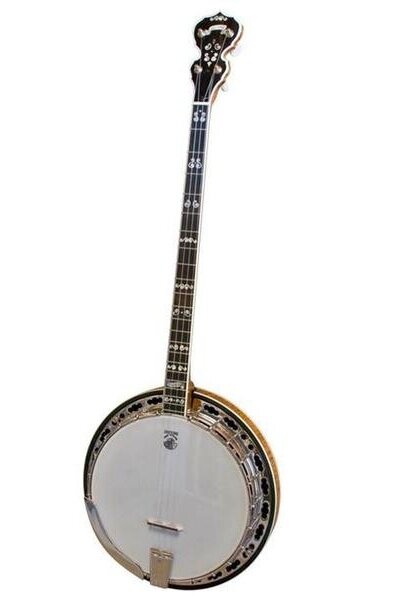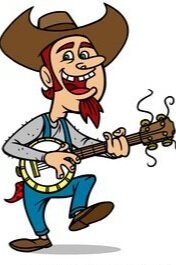Different Strokes Banjo Connections
In the early 1900’s, America was changing
— by Jim Matthews, Author of “You Can’t Shoot the Banjo Player”
Continuing Banjo Connections at a small jam session at Banjo-Rama 2019
I am encouraged to see some dialog developing between four and five string banjo players. It’s actually kind of amazing how those two styles, as well as their common ancestor “old time” style, fit in with the agrarian, industrial, and technological stages of our country’s development.
The original African-American “old time” plantation style was known by many names, including frailing, claw-hammer, and Kentucky knockin’. It basically involved using the thumb for some strings and the back of the index finger to strum the rest. (On page 15 of FIGA’s November- December All Frets, note the banjo player’s finger positions.) This style, commonly played together with fiddles, started to spread around the country in the 1830’s. From traveling minstrel shows, it found its way into local barn dances and went west with the covered wagons. These “old time” banjos, usually with five strings, were popular among soldiers on both sides of the Civil War as well as railroad builders. And the gold fields out west were ringing with banjos of this style, from the Mother Load all the way up to the Klondike. The common bond between all of these music lovers was their closeness to the earth . Ragtime is a variant of this “old time” style. Although it included horns, its tunes still had a soft country-like flow.
In the early 1900’s, America was changing. Factories, streetcars, and automobiles filled the growing cities. The new urban population, including many immigrants, lead noisier, faster-paced lives, in a more culturally diverse environment than previous generations. These new conditions affected American music. In order to keep up with the horns, reeds, pianos, and drums of the new urban styles, the banjo had to become louder and more sophisticated. Banjoists increased their volume by striking strings with picks, transferring most of the finger work to the left hand, bringing chording and chord-melody to new levels of expertise. In this style, the fifth string just got in the way, and banjos without it became available. This new blend of instrumentation was pioneered in New Orleans and became known as Dixieland, or traditional jazz, which eventually branched out into other variations of jazz all over the world. In the 1930’s, banjos started to be replaced by guitars, and did not see revival until the 1940’s when banjos and guitars worked together in bluegrass.
In spite of it’s hillbilly trappings, bluegrass music was really a product of electronic technology. It’s growth in popularity was largely attributed to a new-fangled gadget called a radio, and one program on station WSM in Nashville, the “Grand Ole Opry.” Microphones could allow that “ old time” style (still used out in the country) to be played faster and more aggressively, developing into the familiar bluegrass sound. Mass-media technology, together with the interest of promoters and their audiences, made bluegrass the most commonly heard and recognized banjo style to this date.
However, “old time,” jazz, and bluegrass banjo styles can all still be heard today, under the general headings of folk, jazz, and country respectively. Through these differing styles (some would say differing worlds) the Banjo has shown itself to be a testimony to American pragmatism. And of course, these three styles must be viewed as a broad brush. Over the years, many individual artists have developed their own unique blends of styles to fit ever-changing circumstances.
–Reprinted from the Sacrament Banjo Band Newsletter, January 2005–



